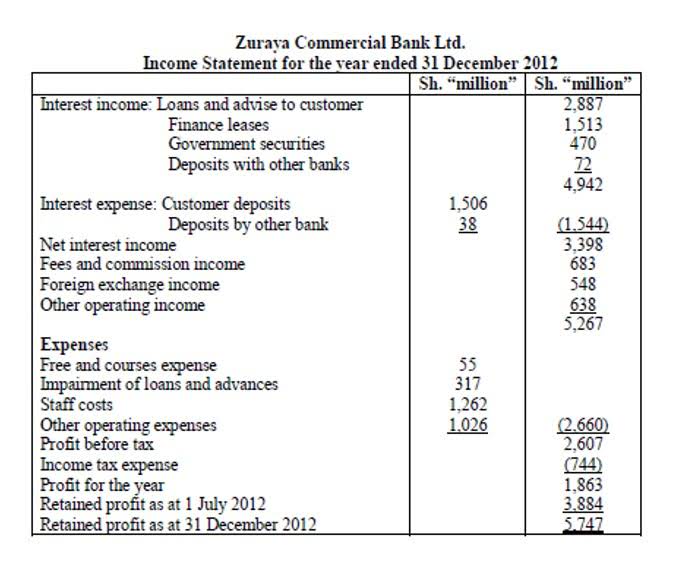
Abdul Co. prepares their financial statements at the end of every year, i.e. 31st December. Therefore, the financial statements for Abdul Co. would be prepared as at 31st December 2019. The accounting treatment of prepayments can vary across jurisdictions and industries. It’s essential to understand the regulatory and tax implications of prepayments in your specific context.
Prepaid Insurance Journal Entry: Recording and Adjusting in Accounting
By spreading the expense over the periods it benefits, businesses can better manage cash flow and budgeting. A company’s property insurance, liability insurance, business interruption insurance, etc. often covers a one-year period with the cost (insurance premiums) paid in advance. The one-year period for the insurance rarely coincides with the company’s accounting year.

Accrual basis vs. cash basis
- By understanding the intricacies of prepayments and their practical applications, one can navigate the financial landscape with greater efficiency and control.
- Rather, under GAAP accounting, it should be gradually and systematically amortized over the term of the agreement.
- Under the cash basis an organization would immediately record the full amount of the purchase of a good or service to the income statement as soon as the cash is paid.
- These principles together contribute to a more consistent and comparable financial statement presentation across periods and among different companies.
- Abdul Co. has a new insurance policy that requires them to pay $2,400 per year, in a lump sum manner.
- To mitigate this risk, businesses should conduct thorough due diligence on suppliers and consider having contractual protections in place.
It is simpler and more intuitive, often used by small businesses and sole proprietors. Prepaid insurance is one of the topics related to asset recognition, expense allocation, and adjusting entries for CFA Level I Financial Reporting. By doing so, analysts can better understand the level of financial health and performance of a company.

How to Calculate Average Total Assets? (Definition, Formula, Calculation, Example)
AI-powered tools can predict cash flow needs, optimize prepayment strategies, and identify the most advantageous payment terms based on historical data and market trends. The integration unearned revenue of blockchain technology and cryptocurrencies into financial transactions offers new opportunities for secure and transparent prepayments. Blockchain’s immutable ledger system can enhance trust and efficiency in advance payments, especially in cross-border transactions. If a supplier fails to deliver the goods or services as agreed, the prepayment may be at risk. To mitigate this risk, businesses should conduct thorough due diligence on suppliers and consider having contractual protections in place.
Prepaid expenses in accounting refer to payments made in advance for goods or services to be received in the future. As the benefits of the prepaid expenses are realized over time, they need to be systematically expensed. Amortizing prepaid expenses involves systematically allocating the cost of the prepaid item over its useful life. For instance, if a business pays for a one-year insurance policy, the expense is divided and recognized monthly over the policy period. This method provides a more accurate representation of financial performance and ensures that the financial statements reflect the true cost of operations during each https://www.bookstime.com/articles/direct-write-off-method accounting period. Prepaid insurance is the payment made in advance for future periods of insurance coverage.
- But, at the end of the financial year, this would then be carried down to the next year, as a prepaid expense.
- Prepaid insurance is nearly always classified as a current asset on the balance sheet, since the term of the related insurance contract that has been prepaid is usually for a period of one year or less.
- Leases can be a great example of situations where a contract may require a lessee to pay a portion of their obligation prior to or at lease commencement.
- In this case, Prepaid Insurance is classified as current assets on the Balance Sheet, as shown below.
- Prior to consumption of the good or service, the entity has an asset because they exchanged cash for the right to a good or service at some time in the future.
- Entities following US GAAP and hence issuing GAAP-compliant financial statements are required to use accrual accounting.
- When it comes to the ACCA syllabus, a prepaid insurance journal entry is addressed under the Financial Accounting (FA) and Financial Reporting (FR) papers.
We can make the journal entry for the amortization of prepaid insurance by debiting the insurance expense account and crediting the prepaid insurance account. Prepayments affect a company’s financial statements by impacting both the balance sheet and the income statement. On the balance sheet, prepayments are recorded as assets, representing the value of goods or services yet to be received.

Amortizing prepaid expenses involves calculating the portion of the prepaid amount that corresponds to each accounting period. This calculated amount is then expensed in the income statement, reducing the prepaid asset accordingly. By doing so, businesses can achieve a more precise matching of expenses and revenues, which is a fundamental principle of accrual accounting. Prepaid expenses are payments made for goods or services that will be received or used in the future.

What Are the Methods of Amortizing Prepaid Expenses?

On 01 June 202X, the company makes a payment of $ 120,000 for the insurance service that will cover 12 months (June 202X-May 202X+1). So ABC does not yet consume the insurance service yet, it is the prepaid expense that will be classified as the current assets. When we have the right to receive services or assets over an agreed-upon term and we prepaid for the right, the prepaid asset is not derecognized all at one time as with other prepaid expenses. Rather, under GAAP accounting, it should be gradually and systematically amortized over the term of the agreement. Prepaid expenses, or Prepaid Assets as they are commonly referred to in general accounting, are recognized on the balance sheet as an asset. A “prepaid asset” is the result of a prepaid expense being recorded on the balance sheet.
- By using methods such as the straight-line or declining balance, businesses can ensure that their financial statements reflect the true economic impact of advance payments.
- The proceeding amortization schedule illustrates the appropriate amortization of the short-term and long-term portions of the prepaid subscription.
- Prepaid Insurance, by definition is an expense that has been paid in advance by the organization.
- There are different types of insurance policies available, and they can be tailored to meet the needs of the customer.
- And you’re treating this as a current asset until the coverage starts and time goes by.
- This method is straightforward and easy to apply, making it a popular choice for businesses.
It is the accounting principle that revenue and expense must record based on occurrence. For insurance, the expense is recorded when the company has utilized the service. As mentioned earlier, recording prepaid insurance does hold tantamount importance from an prepaid insurance journal entry organizational perspective.


